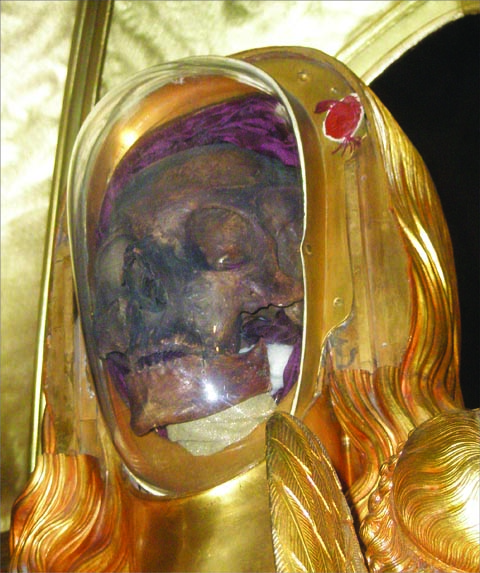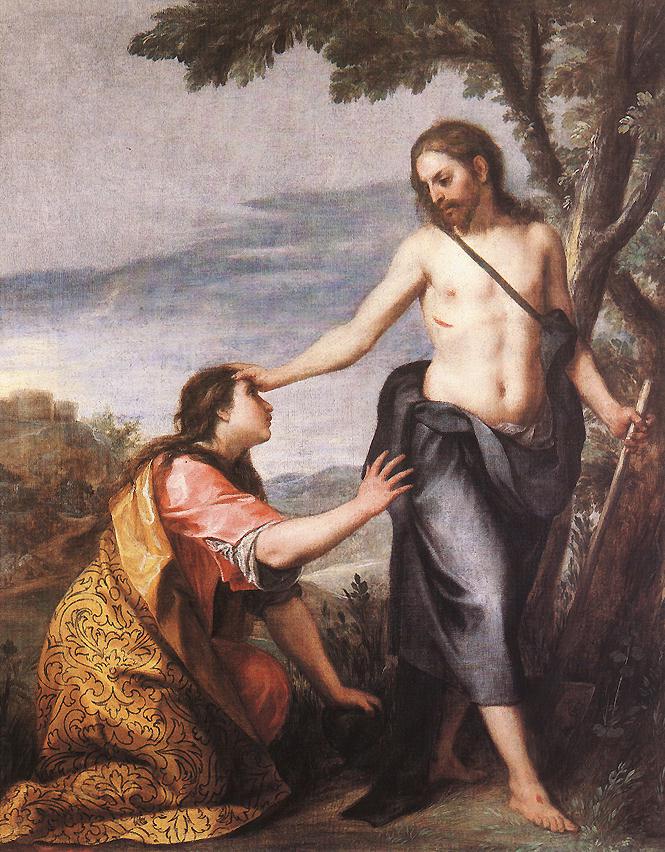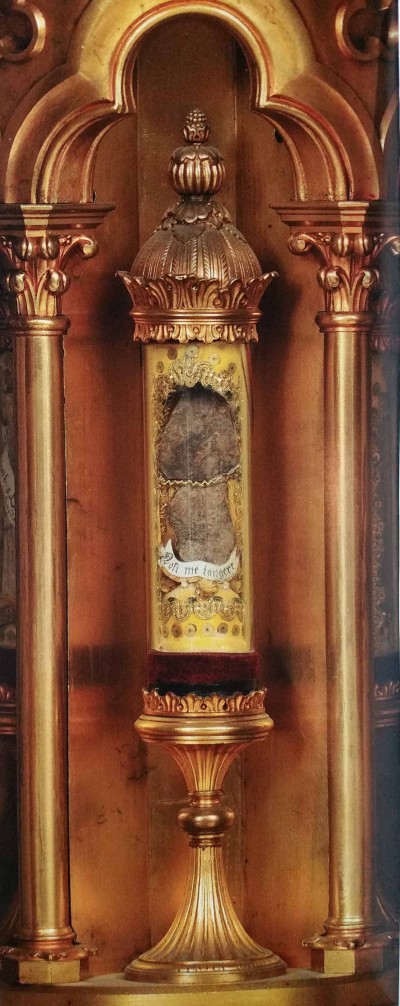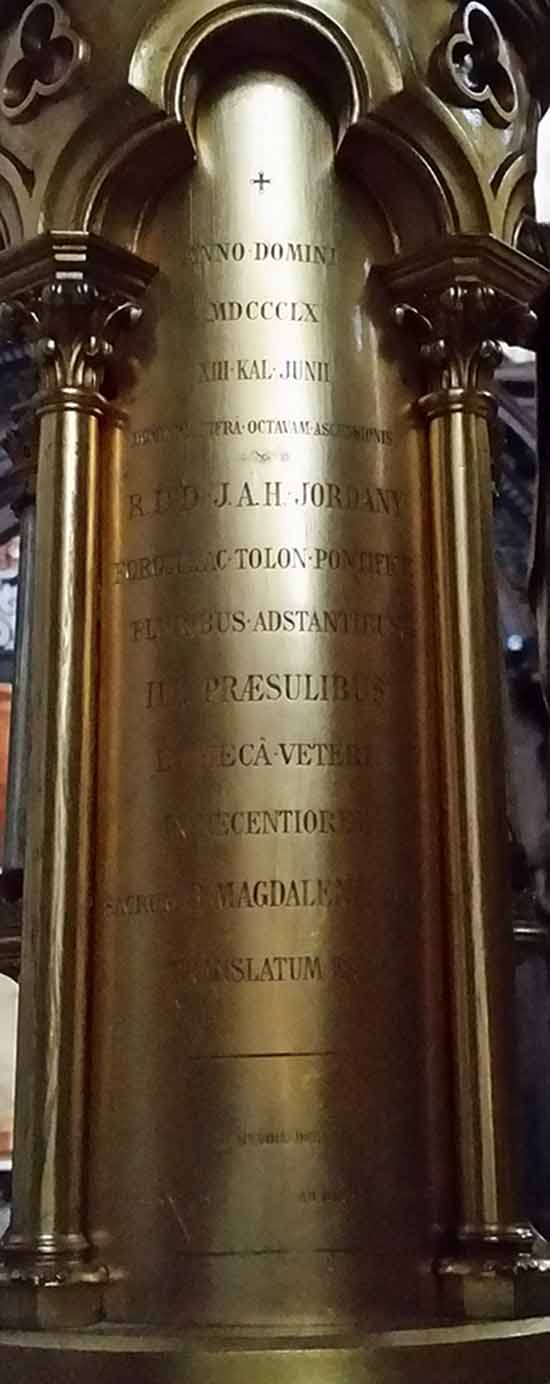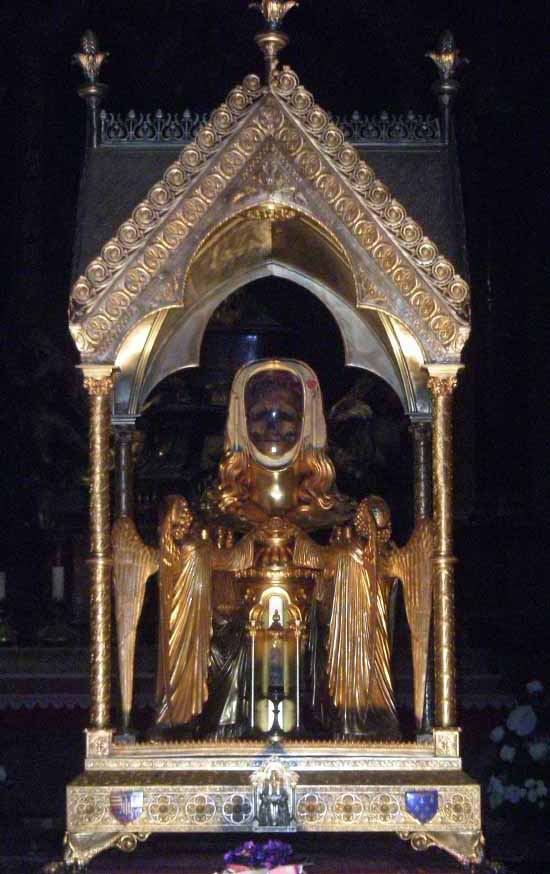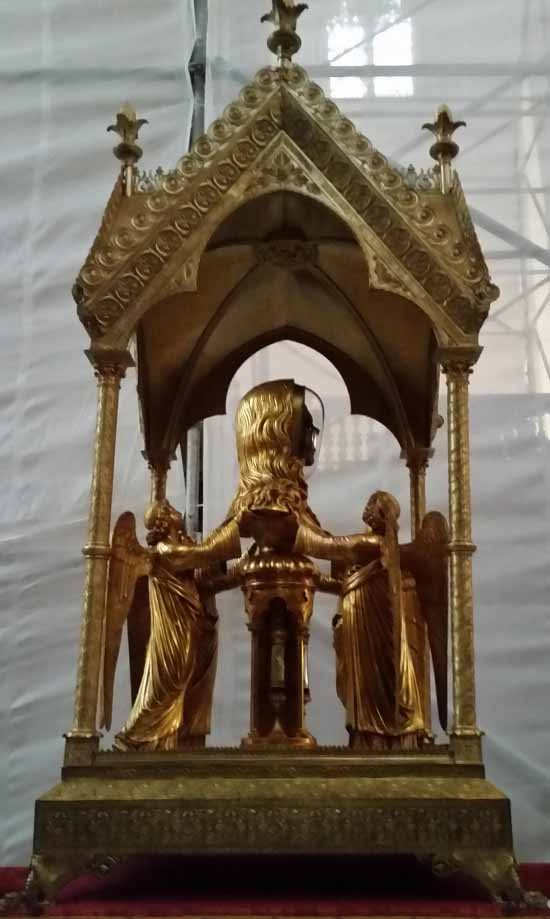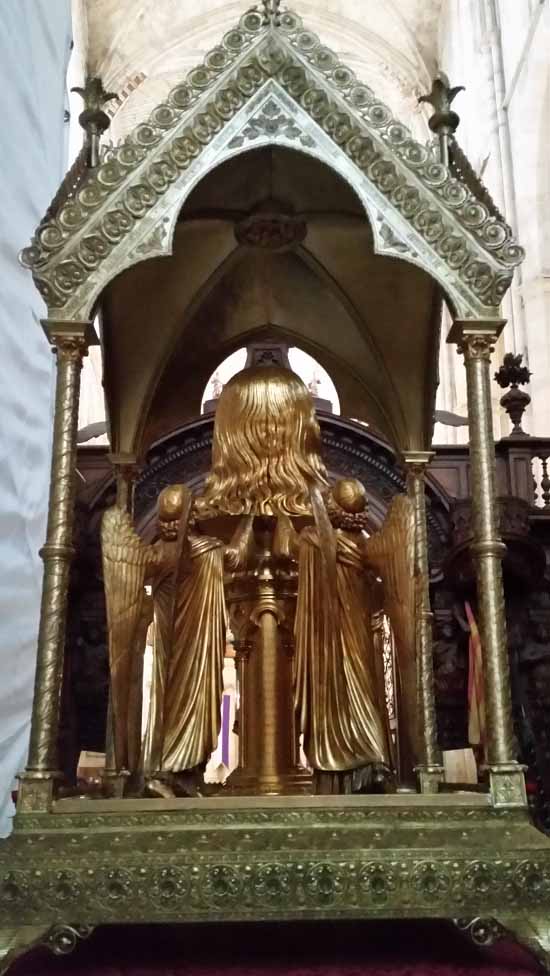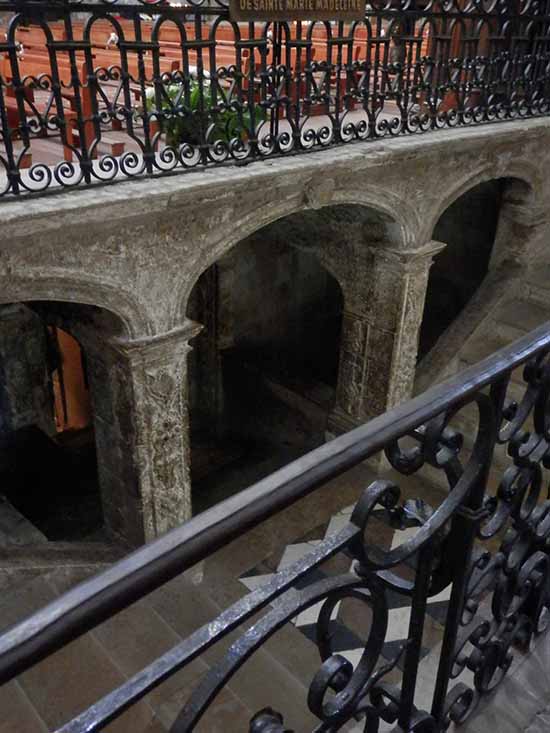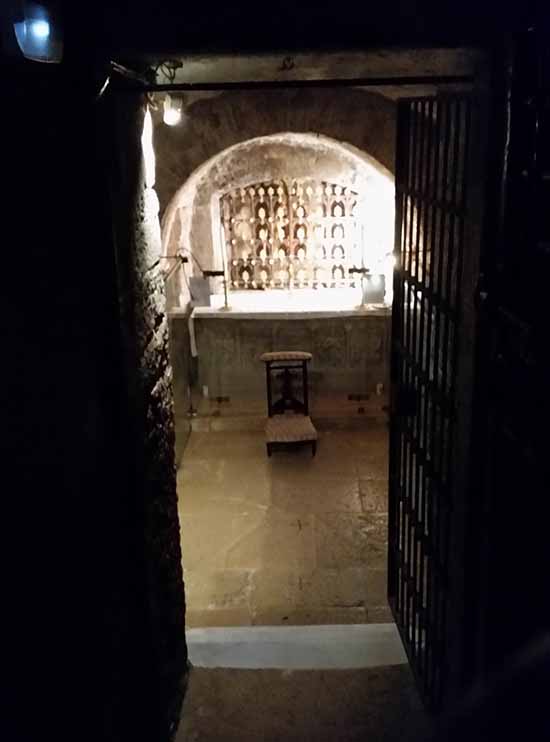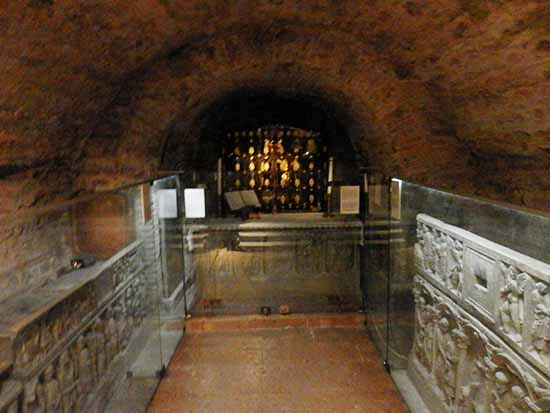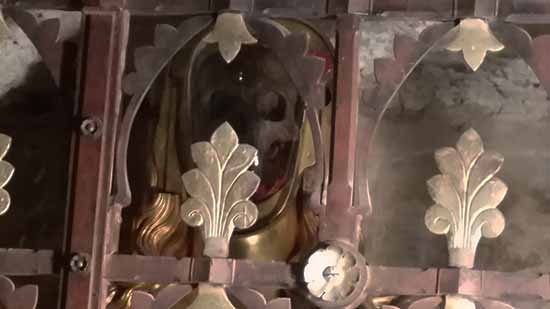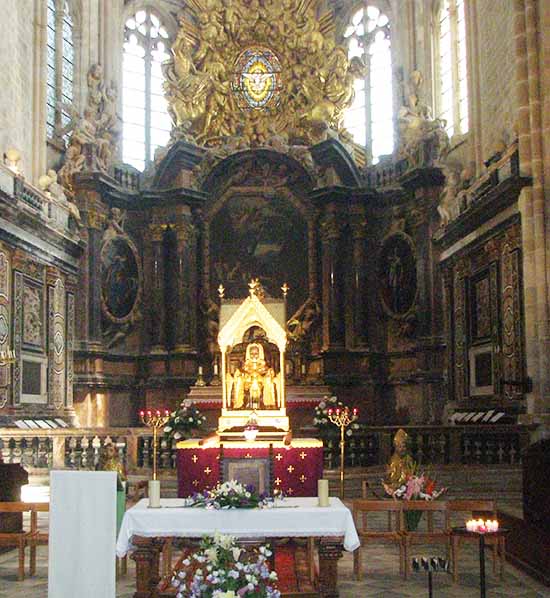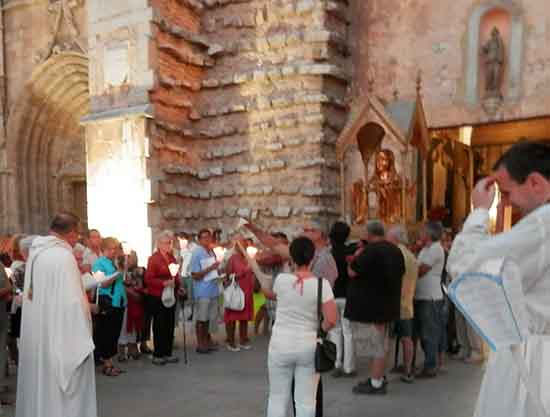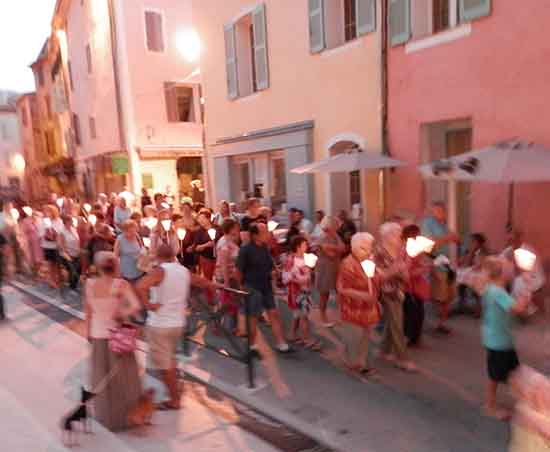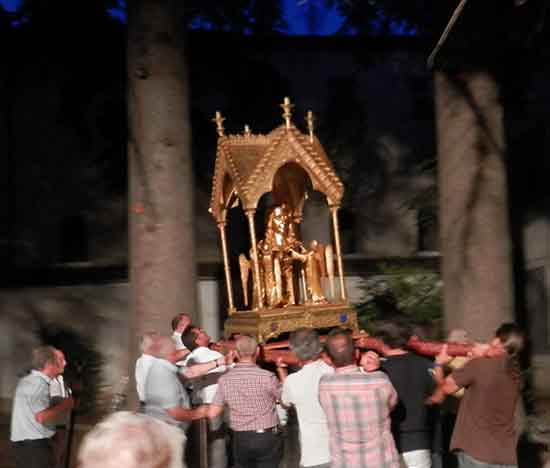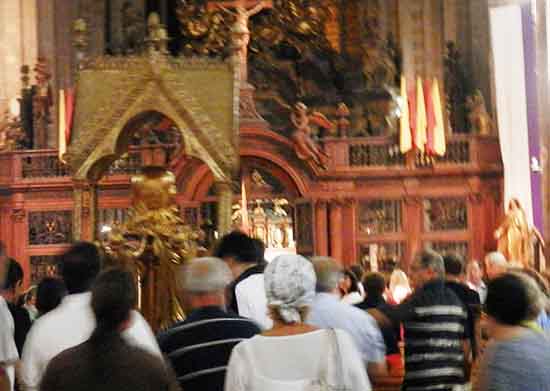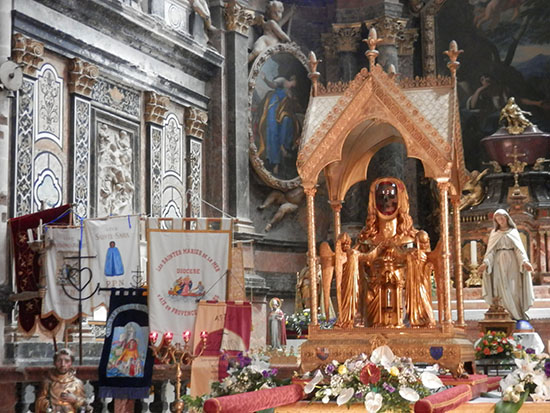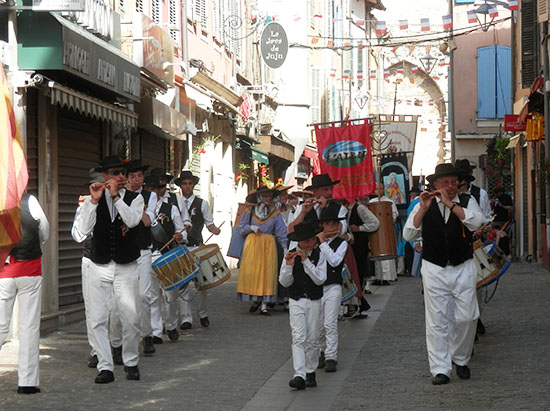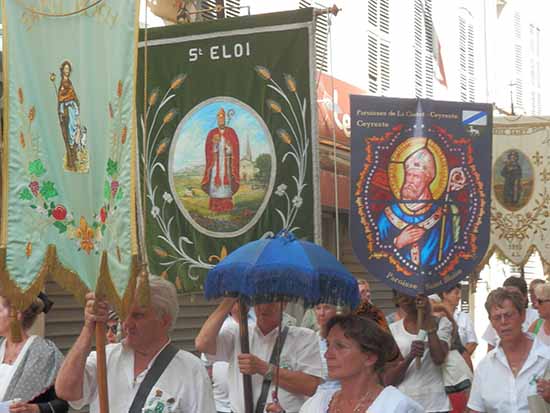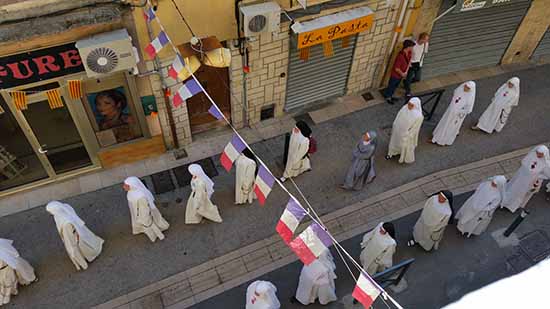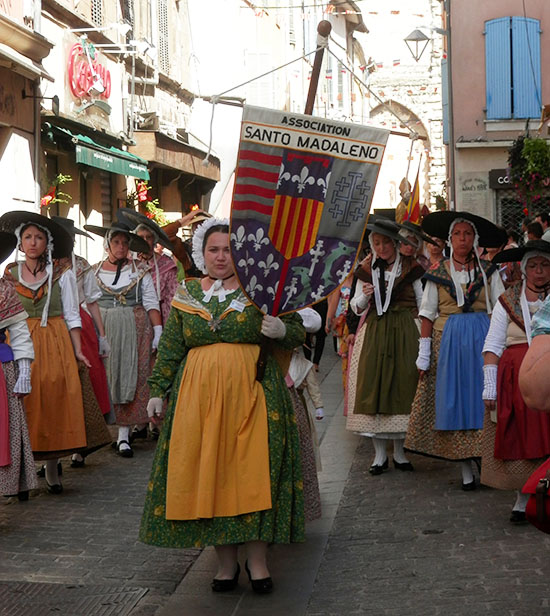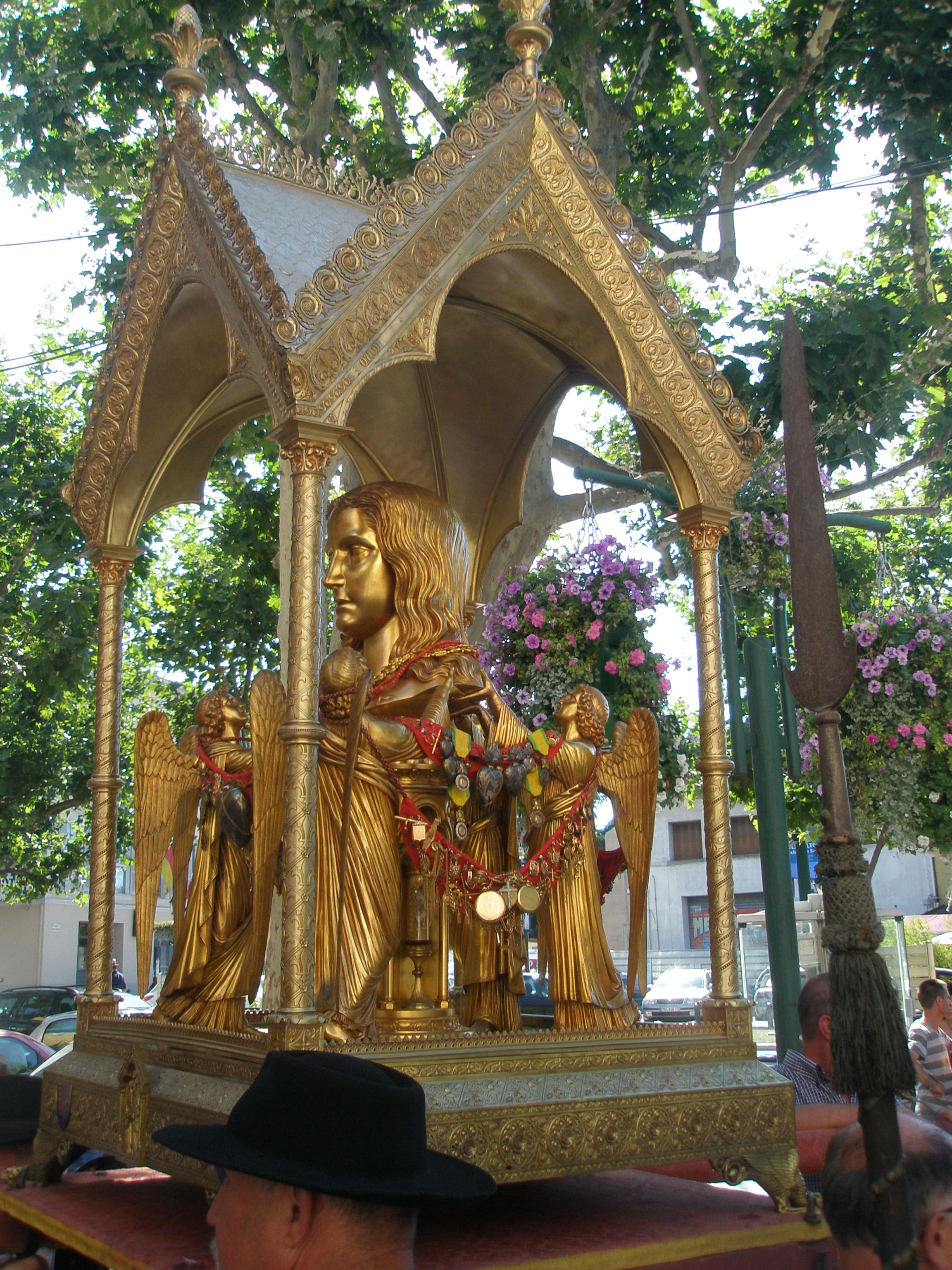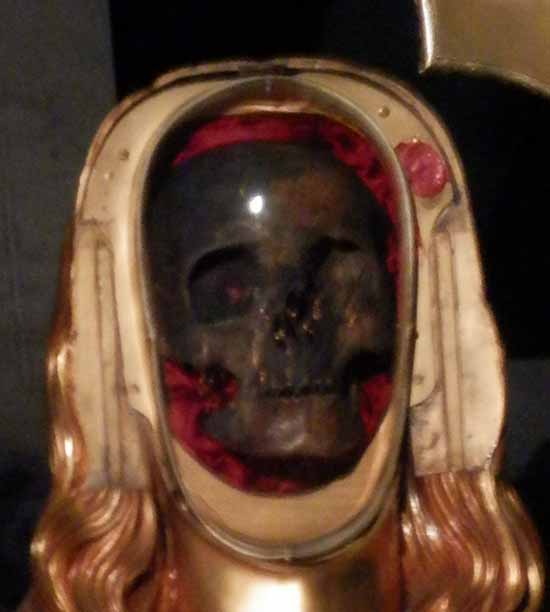 Skull of Mary Magdalene
Skull of Mary Magdalene
The skull of Mary Magdalene can be found in the South of France in the once Gallo Roman town of Villa Latta or Tégulata, which after the death of Maximin (one of Jesus’ seventy-two disciples), became St. Maximin-la-Sainte-Baume.
The skull of Mary Magdalene rests most of the year in the crypt of the Basilique Sainte Marie Madeleine, a massive Gothic basilica whose construction began in 1295 under Charles II of Anjou, King of Naples, Count of Provence and nephew of St. Louis (King of France). It was on this ground, that Mary Magdalene’s body was buried by her good friend Maximin (1st bishop of Aix), and later hidden for centuries only to be re-discovered on December 10, 1279 during excavations ordered by Charles II himself.
Mary Magdalene’s remains were found intact except for her jaw bone. In the dust inside the tomb was a wooden tablet wrapped in wax.
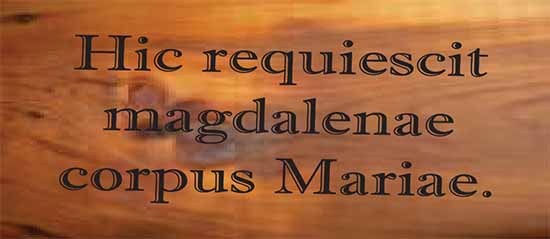 “Here lies the body of Mary Magdalene.”
“Here lies the body of Mary Magdalene.”
Also found in her tomb was the Sainte Ampoule (a glass sphere containing earth soaked with blood of Jesus Christ collected by Mary Magdalene at the foot of the cross).
Reunion of jaw bone and skull of Mary Magdalene
Mary Magdalene’s jaw bone had been sent to Rome after a previous excavation of her tomb and before the Saracen invasion of 710 AD, when all important relics in France were hidden. In Rome, Mary Magdalene’s jaw bone had been venerated for centuries. With the news of the 1279 discovery, Pope Boniface VIII returned the jaw bone to St. Maximin-la-Sainte-Baume and on April 6, 1295 it was reunited with the skull of Mary Magdalene. The pope then published the pontifical bull for the establishment of the Dominicans at Sainte Baume and St. Maximin. The Dominicans chose Mary Magdalene as co-patroness of their Order of Preachers.
Noli me tangere
Noli me tangere, meaning “touch me not” is the Latin version of words spoken, according to John, by Jesus to Mary Magdalene when she recognized him after his Resurrection:
for I have not yet ascended to the Father;
but go to my brothers and say to them,
‘I am ascending to my Father and your Father,
to my God and your God.’”
When first opening the tomb of Mary Magdalene in 1279, there was a wonderful smell of perfume that filled the air, and there was a small piece of skin attached to her skull in the spot where Jesus touched her after his Resurrection. The bishops who witnessed the excavation called the piece of skin “noli me tangere,” for they realized that through the miracle of Jesus’ touch the skin was still alive. Those in charge of the relics carefully sealed the noli me tangere in a glass vase. Centuries passed…. there was a widely recognized, time-honored alliance between Mary Magdalene and Provence..
In 1793 during the French Revolution the shrine was broken into and the relics thrown about. The basilica at St. Maximin was saved from utter destruction by transforming it into a government store placing over the great doors the words – Fournitures Militaires or “Military Supplies.”.
Joseph Bastide, sacristan of St. Maximin, removed the skull of Mary Magdalene along with the Sainte Ampoule and the noli me tangere. After the Revolution, Bastide brought his treasure to the archbishop..
Less than a century later, at the time the gold reliquary was created to house the skull with its golden hair carried by four golden angels (presumably 1860 because the Roman numerals “MDCCCLX” are on the back), the artist designed a special place below the skull to put the glass vial containing the precious noli me tangere.
Gold reliquary containing the skull of Mary Magdalene
T H E C R Y P T
You can find the skull of Mary Magdalene in the crypt behind an iron grate every week of the year but one. As most crypts are, it is deep under the ground floor of the basilica, down a narrow stone staircase.
The skull of Mary Magdalene is in the crypt behind the iron grate in the center just behind her alabaster sarcophagus. It is difficult to see the skull through the iron grate even when you stand close. The sarcophagus on the left is that of Maximin and on the right Cedonius (the blind man Jesus healed).
July 22nd feast of Mary Magdalene lasts all week long
Now if you are lucky enough to be in St. Maximin-la-Sainte-Baume around the feast day, as we will be on the 2015 Saint Mary Magdalene Novena Pilgrimage, you will have ample opportunity to see the skull of Mary Magdalene up close.
In advance of the feast Fr. Florian Racine, pastor of the Basilique Sainte Marie Madeleine and co-founder of the Missionaries of the Most Holy Eucharist, takes the reliquary with the skull of Mary Magdalene out of the crypt and arranges it on the main altar.
On Wednesday, July 22nd this year (2015), there is a Feast Day Procession at La Sainte-Baume with Mary Magdalene’s relic (her tibia) from the Hostellerie-de-la-Sainte-Baume up to the Cave of La Sainte-Baume. The Dominicans will celebrate a special Feast Day Mass in the Cave.
Thursday evening, July 23rd, in front of the Basilique Sainte Marie Madeleine, Norbert Flayol, a member of the Association Santo Madaleno with deep family roots in Provence, has inherited the honor of announcing the Official Opening of the Feast. The skull of Mary Magdalene in its gold reliquary weighs approximately 400 kilos, which is 880 pounds. It is carried by eight men (with eight on the side ready to alternate) from the basilica through the streets of St. Maximin-la-Sainte-Baume in a candlelight procession with songs and prayers.
On Sunday, July 26th this year (2015), there is an all day Feast Day Celebration, starting with the Association Santo Madaleno marching through the streets of the town playing their flutes, beating their drums and shooting their guns. Then everyone enters the basilica for the Feast Day Mass with the skull of Mary Magdalene in its gold reliquary center stage on the main altar accompanied by other Saints of Provence.
The finale is an afternoon Feast Day Procession with the skull of Mary Magdalene through the streets of St. Maximin-la-Sainte-Baume.
When they take the skull of Mary Magdalene out of doors they cover the skull with a gold face for protection.
It is truly remarkable that after 2000 years the skull of Mary Magdalene is preserved in a little town in the South of France for all the world to come and see. The spirit of this exceptional friend of Jesus lives on to this day, and is especially rich in Provence.

